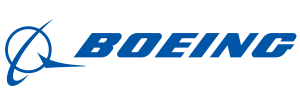Sustainable Aerospace Firsts
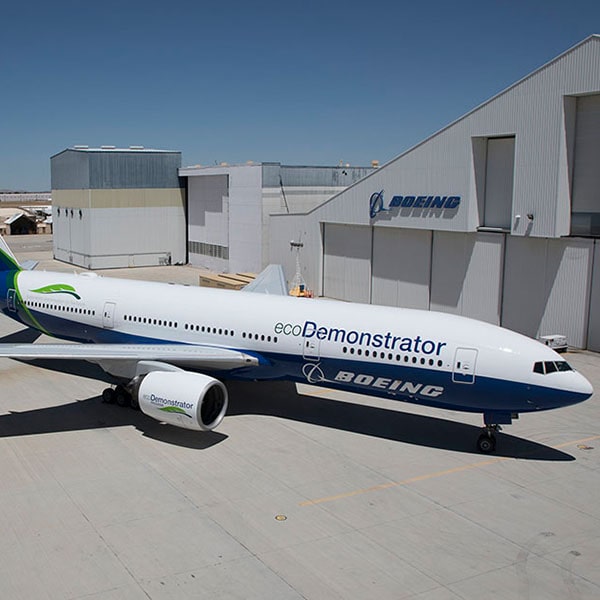
Boeing 777 Ecodemonstrator aircraft (Boeing)

Boeing 777 Ecodemonstrator aircraft (Boeing)
How does this align with my curriculum?
Learn how Boeing is making aviation more sustainable.
Boeing is committed to protecting, connecting and exploring our world and beyond, safely and sustainably. Check out some of the new technologies and solutions Boeing has pioneered in order to build a more sustainable future.
2008

Image - Text Version
Shown is a photograph of a small white plane flying towards the viewer just above a concrete runway with grass on either side. In the distance is a low, rectangular grey building to the left, and an overcast sky beyond. The plane has a long, thin wings, a tinted bubble-shaped canopy, and a T-shaped tail at the rear. There is a propeller at the front of the plane and three wheels protruding from its belly, just above the runway.
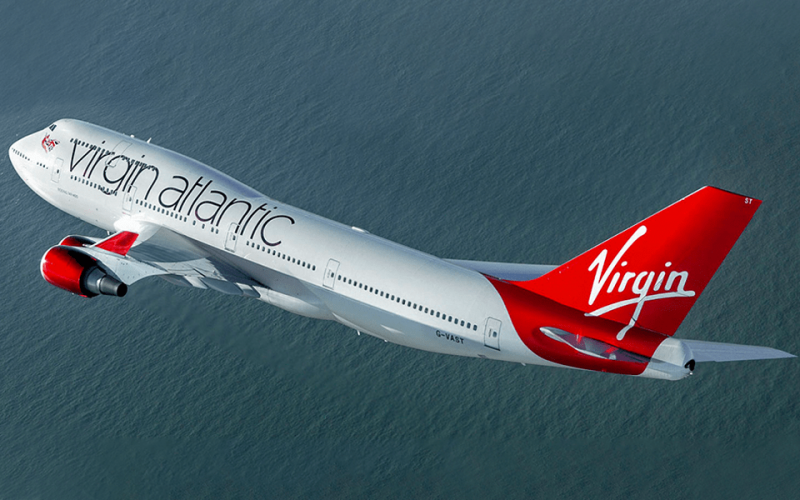
Image - Text Version
Shown is a photograph of a large jet airplane flying away from the viewer, banking over a large body of water. The airplane has a red tail with the word "Virgin" written on it in white, and the words "Virgin Atlantic" printed on the side of the plane in large black letters. Two large, red, barrel-shaped engines can be seen below the left wing, and the tip of the wing, which is red, curves upward. There are many small windows visible along the side of the airplane. At the front of the airplane, the top is bulged, with another row of windows along the side and windows for the pilots at the front of the bulge.
2009
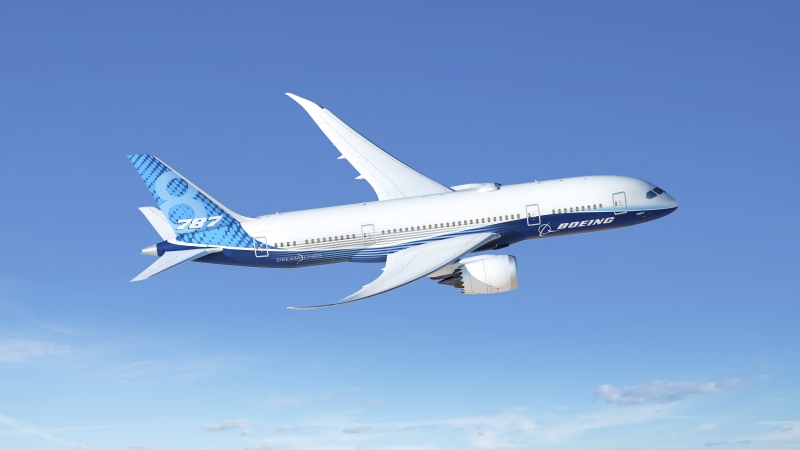
Image - Text Version
Shown is a photograph of a large jet airplane flying from left to right, banking towards the viewer, in a blue sky with a few wispy clouds at the bottom of the photo. The airplane is white with a wavy dark blue belly and a medium and light blue diamond pattern on the tail. There are many small windows visible along the side of the airplane. The word "Boeing" is printed in white on the side of the airplane below the windows near the front, and the number "787" is printed in white at the base of the tail, with a large number "8" in light blue behind it on the tail. The wings are swept back and curve upwards towards the tips. There is a large, white, barrel-shaped engine below the right wing.
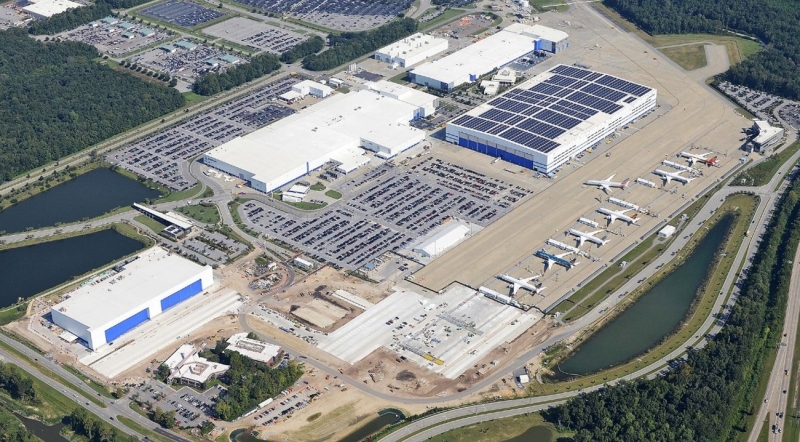
Image - Text Version
Shown is a photograph looking down towards a large aircraft factory on a concrete pad surrounded by a wooded area, taken on a bright day. In the lower right a road runs from the bottom middle towards the upper right side. Above that is a large open concrete area with seven large, white airliners parked on it. Above and to the left of the airplanes is a large, rectangular white building with large blue doors on one side and solar panels on the roof. There is another large white building with blue doors on one side to the lower left of the photo, and two more large white rectangular buildings in the upper centre of the photo. Parking lots with many cars in them surround the buildings in the centre of the photo.
2010
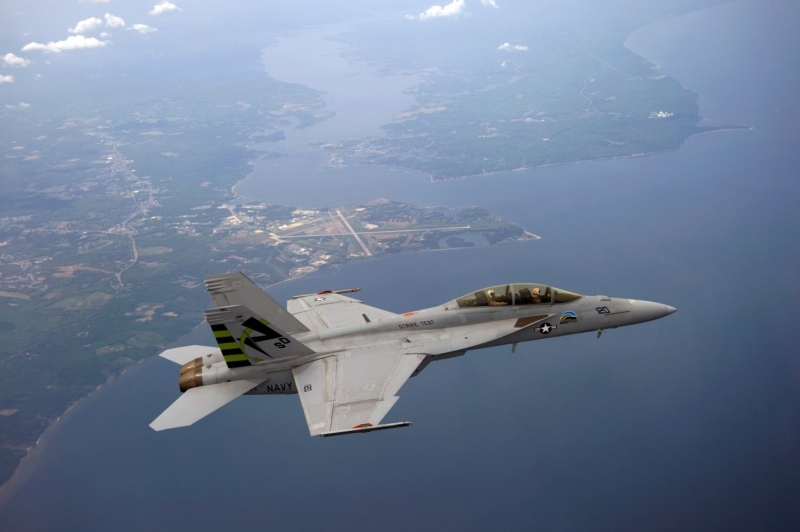
Image - Text Version
Shown is a photograph of a sleek grey jet airplane flying from left to right over a large body of water with land visible in the upper left of the photo. The plane has a long, pointed nose with a clear bubble on top, in which two pilots can be seen. The plane has rectangular, slightly swept-back wings near the back of the plane, with smaller, more swept-back tailplanes behind the wings. There are two tail surfaces that stick up from the back of the plane that make a shallow V shape. On the tail is a black lightning bolt and four horizontal black stripes. There are two jet engines at the back of the plane.
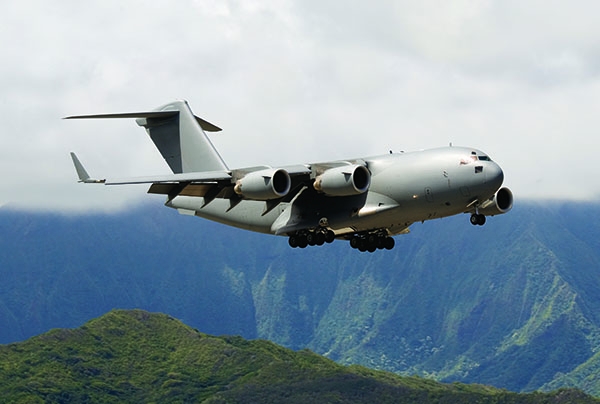
Image - Text Version
Shown is a photograph of a large medium grey jet airplane flying from left to right in front of a mountain, with a green hilltop beneath the plane to the right. The top of the background is covered in solid low clouds. The plane has a large, round body with windows for the crew at the front of the plane, a pair of wheels under the nose, and two sets of wheels under the middle of the plane. The plane has large, slightly swept wings with upturned tips mounted at the top of the body, with two large, grey, barrel-shaped jet engines under each wing. There is a large, T-shaped tail at the rear of the plane.
2012
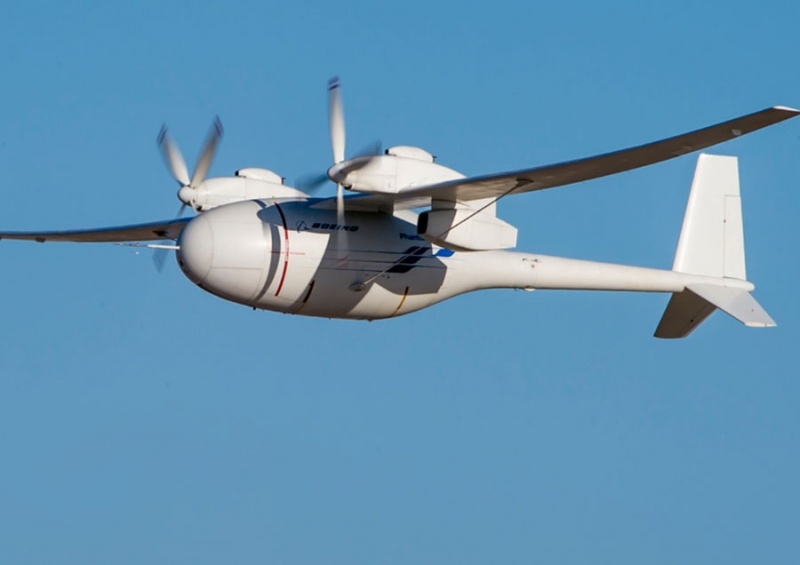
Image - Text Version
Shown is a photograph of an unmanned, grey airplane flying from right to left across a blue sky. The plane is overall light grey, with an egg-shaped body, a tail with a large vertical tail and two smaller fins pointing downwards in an upside-down Y-shape at the end of a long boom that sticks out of the back of the body, and a long, thin straight wing attached to the top of the body. No windows are visible. On top of each wing is an engine pod with a four-bladed propeller in front of it. Underneath the wing is a rectangular box with an opening at the front.
Did you know?
A full-sized Phantom Eye can stay in the air for up to 10 days!
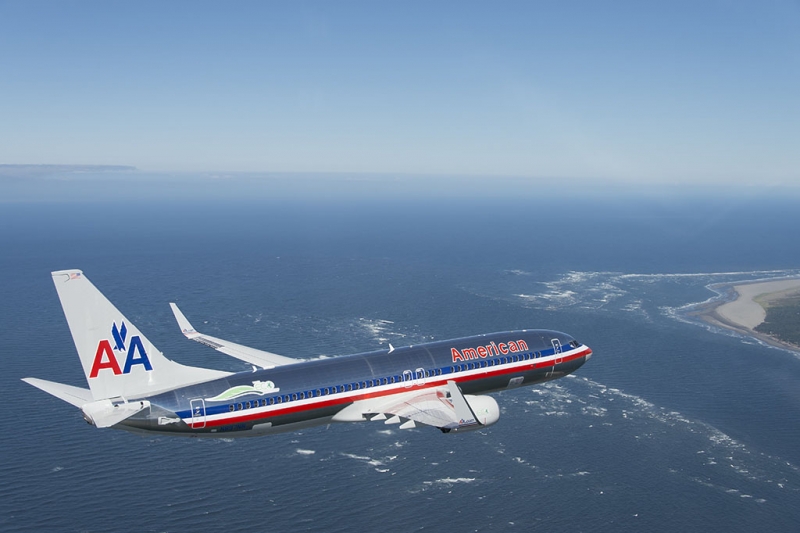
Image - Text Version
Shown is a photograph of a large jet airplane flying from left to right, in a hazy sky over a large body of water with some white wavetops visible. The airplane is silver with grey wings and tail, with many small windows visible along the side of the airplane. There is a red, white, and blue white stripe running along the side of the plane, with the word "American" printed in red outlined in white on the side of the plane above the windows towards the front. On the tail are the large letters "A" and "A," one in red and one in white, with a blue eagle with wings raised between and above the letters. The wings are swept back and curve upwards towards the tips. There is a large, grey, barrel-shaped engine visible below the right wing.
2015
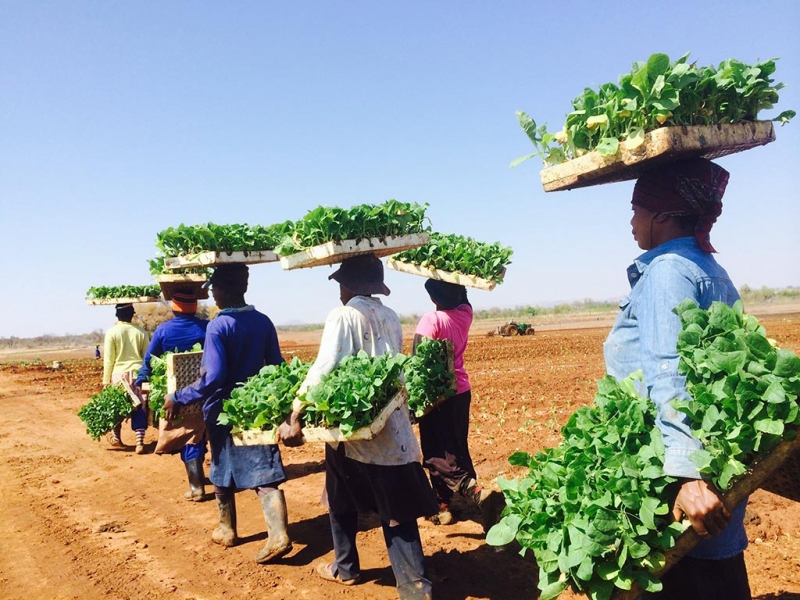
Image - Text Version
Shown is a colour photograph of a group of farmers carrying harvested crops. Six farmers walk in a line away from the camera. Each person carries a rectangular tray of leafy vegetables on their head as well as a similar tray in their arms. The people are all in long sleeved, loose fitting shirts. Most wear long pants and boots. The ground they walk on is made of fine pale rust-coloured dirt.
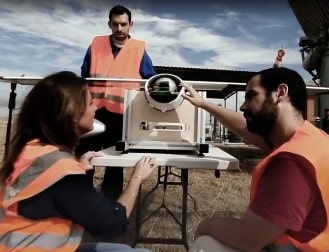
Image - Text Version
Shown is a colour photograph of three people looking at a small demonstration aircraft. The small aircraft sits on a white folding table in a grassy area. A man stands behind the aircraft and looks down towards it. Crouching near the front of the aircraft, in the foreground of the image, are a man and a woman. The man has his right hand on the nose of the aircraft. The woman has both of her hands on the front edge of the table. The man and the woman appear to be talking to each other. Each of the three people is wearing an orange safety vest. In the background is a blue sky filled with streaky white clouds.
2016
Image - Text Version
Shown is a photograph of a medium-sized jet airplane flying from left to right, banking away from the viewer, in a hazy sky solid clouds at the bottom of the photo and mountains rising out of the clouds. The plane is white with a wavy dark blue belly and a blue stripe on the tail. There are many small windows visible along the side of the plane. The word "Boeing" is printed in white on the side of the plane below the windows near the front. The wings are long and thin, stretching out from top of the body. There is a white barrel-shaped jet engine below each wing near the body. A large strut connects from the bottom of the body to the middle of each wing.
2018
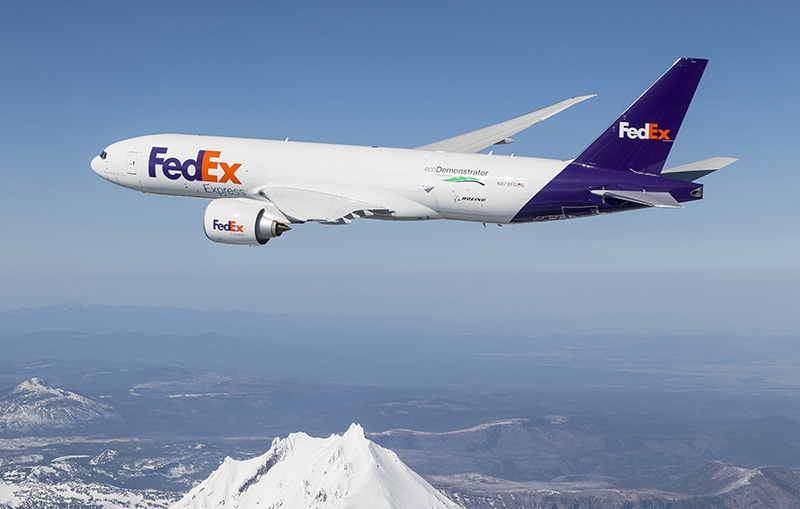
Image - Text Version
Shown is a photograph of a large jet airplane flying from right to left, banking towards the viewer, in a blue sky with a large body of water at the bottom of the photo. The airplane is white with a dark blue tail. The wings are swept back with a large, white, barrel-shaped engine below the left wing. Printed in large letters on the side of the plane towards the front is the word "Fedex" in violet and orange. It is also written on the side of the engine, and on the tail in white and orange. The word "ecodemonstrator" is printed in black on the side of the plane near the tail, with a green leaf underneath the word.

Image - Text Version
Shown is a colour photograph of hands holding carbon fibres. The hands are inside pale grey gloves. The carbon fibres are a metallic dark grey colour. They are small, thin, flat and rectangular. The hands are cupping potentially thousands of fibes. The background is filled with more fibres, but unlike those in the hands, the ones in the background are blurred out.
2019
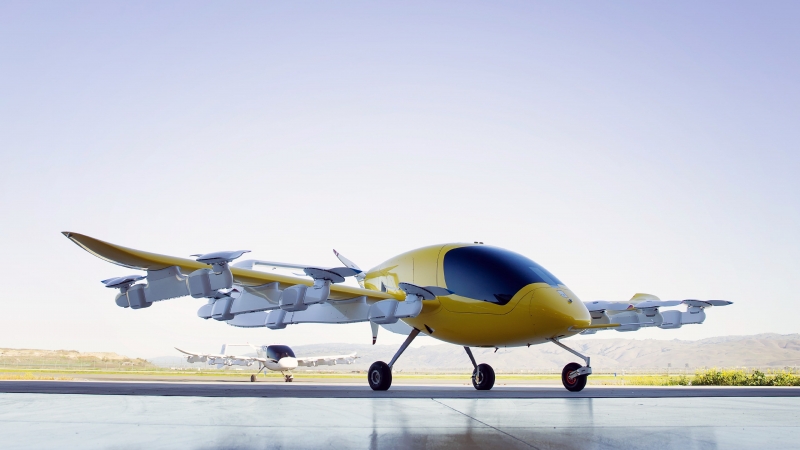
Image - Text Version
Shown is a photograph of two airplanes sitting on a runway in a desert with hills in the background and a hazy blue sky above. The airplane in the foreground has an orange egg-shaped body with a large tinted window at the front top. It is sitting on three wheels on thin legs. The wings attach to the middle of the body. On each wing are three bars, each of which has an upward-facing propeller in front of and behind the wing. The plane in the background is like the one in front, but white overall.
2021
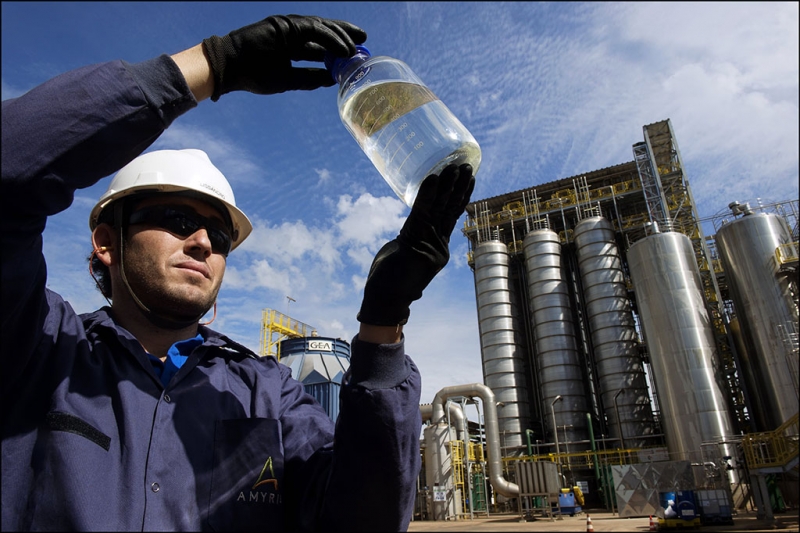
Image - Text Version
Shown is a colour photograph of a man holding a bottle of SAF fuel in front of a refinery.
The man is standing on the left side of the foreground. He is wearing dark blue coveralls, black gloves and a white hard hat. He is only visible from the torso up. In his hands is a graduated glass bottle that is almost full of a colourless liquid. The man is holding the bottle up towards the Sun. The man appears to be looking at the liquid in the bottle. In the background are several large shiny metal cylinders as well as a large structure with other metal cylinders. Light-coloured metal pimples can be seen between the man and the other structures.
For more than 100 years, Boeing has been committed to protecting, connecting and exploring our world and beyond. They continue to do so today, safely and sustainably.
Let’s Talk Science appreciates the work and contributions of Boeing Defense, Space & Security in the development of this Backgrounder.
About Boeing Defense, Space & Security
Boeing is the world's largest aerospace company and leading manufacturer of commercial jetliners, defense, space and security systems, and service provider of aftermarket support. As America’s biggest manufacturing exporter, the company supports airlines and U.S. and allied government customers in more than 150 countries. Boeing products and tailored services include commercial and military aircraft, satellites, weapons, electronic and defense systems, launch systems, advanced information and communication systems, and performance-based logistics and training.
Learn More
Exclusive: Inside The Experimental Boeing 777X Boeing ecoDemonstrator Program (1:15 min.)
This video from Boeing shows the different airplanes which have been ecoDemonstrators from 2012 to 2019.
What Even is the Boeing ecoDemonstrator Project? (10:38 min.)
This video from Long Haul by Simple Flying explores the history of the ecoDemonstrator program.
Boeing 777X - What’s the Difference? (10.00 min.)
This video from Sam Chui looks at the main features of the 777X and also covers its first flight on 25 January 2020.
Boeing Partnering with Alaska to Test ecoDemonstrator Program for 737 Max (4:53 min.)
This video from Jetline Marvel provides details of the 2021 ecoDemonstrator program.
References
Boeing (Jan 8, 2019). Spreading our wings: Boeing unveils new Transonic Truss-Braced Wing.
Boeing (Oct 7, 2021). 2021 Boeing ecoDemonstrator Tour [Video]. YouTube. https://www.youtube.com/watch?v=oAJGiiXkkmw
Garche, J. (ed.) (2009). Encyclopedia of Electrochemical Power Sources. Elsevier Science: Amsterdam.
Maull, L., P. McElroy and J. Wingbermuehle (Apr 16, 2021). Sustainability is built in. Boeing.

